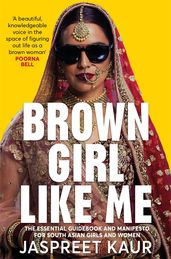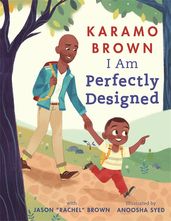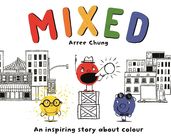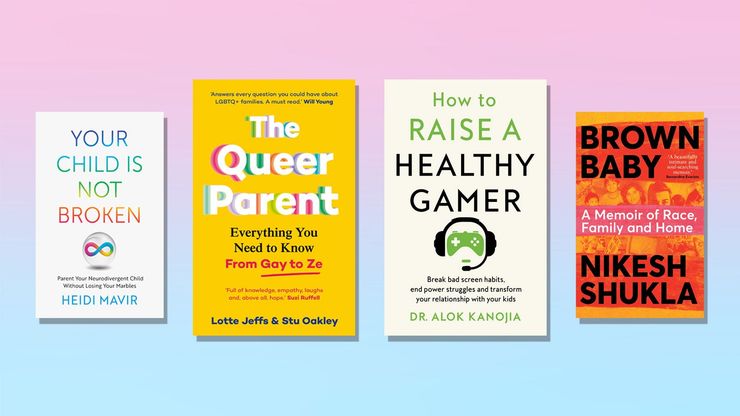How to have open and honest conversations with children about racism
History teacher and writer Jaspreet Kaur on how to talk to children about race and racism.

Jaspreet Kaur, author of Brown Girl Like Me offers advice to parents of all ethnic backgrounds on how to discuss race and racism in a considered, honest and age-appropriate way.
As a school teacher for nearly a decade, I have seen the range of conversations that can come up in the classroom, and discussions about racism have always been the most difficult to navigate. This isn’t because we don’t know how to explain what racism is, but because we worry about protecting our children’s innocence, and hope that avoiding talking to them about discrimination might mean we can protect them from it. As parents and educators, we’re sometimes not practised in having to explain it in a way that is appropriate for young people. It’s important for us adults not to make assumptions, meet children where they are, and be responsive to our children's needs too.
It is essential to have open and honest conversations with our children about race and racism no matter our ethnic background. These discussions play a crucial role in promoting understanding, empathy, and inclusivity from an early age. By addressing these topics proactively, we can equip our children with the knowledge and tools to navigate a diverse world with respect and compassion.
Start early
One of the key things to do is to start early. Research shows that children as young as five years old begin to notice and make sense of racial differences and even show signs of racial bias. Meanwhile, the children who are on the receiving end of that racial bias are left feeling confused about why they are being treated differently to their peers.
By initiating conversations about race from an early age, we can help our children develop a positive attitude towards diversity. You can begin by acknowledging and celebrating the uniqueness of different racial and ethnic backgrounds. Or, if your little one asks a question in public before you’re ready to talk about race, rather than hushing them and feeling embarrassed, you can take it as a cue to emphasise the strength in diversity that enriches our society. For example, if a child asks why someone's skin looks different than theirs, you could explain that "skin comes in many different beautiful colours.”
Encourage open dialogue
Creating a safe space for open dialogue is essential. Encourage your children to ask questions, express their thoughts, and share their experiences. Listen actively and validate their feelings, even if they might seem uncomfortable or challenging. You can even ask them their thoughts and encourage them to make sense of a situation while challenging bias. A great way to do this is by diversifying the books, films and TV shows they might watch, and finding opportunities here to fill in gaps in their knowledge or existing biases. By fostering an environment of trust and acceptance, we can ensure that our children feel heard and understood, allowing them to develop a deeper understanding of race and its impact on society.
If there’s ever a point where you don’t know the answer, don’t be afraid to tell your child so too. It’s okay to not know, and it’s also okay to find out together. Consider researching the answer with your child if it’s appropriate to do so. Or a simple collaborative response like, “That’s a really good question and I don’t know the answer to that. I’ll learn more and come back to share it with you, does that sound good?” signals to your child that it is okay to not know some things and seek out knowledge to learn more. Such uncomfortable moments can lead to deeper connection with your children and encourage curiosity.
Address stereotypes and prejudices
Help your children identify and challenge stereotypes they may encounter in their daily lives by pointing out discrimination when you see it. This could be while watching the news or when your child is sharing a story about what happened on the playground.
Teach them to question assumptions, challenge biases, and recognise that every individual should be judged based on their character and actions, rather than their racial or ethnic background. By debunking stereotypes and promoting empathy, we can empower our children to become agents of positive change in a world that still struggles with racial discrimination.
As parents, it is important to also lead by example. Examine your own biases and prejudices and be willing to challenge and unlearn them. Engage in ongoing learning and self-reflection to ensure that you are equipped to guide your children in these discussions. By modelling open-mindedness, empathy, and a commitment to equality, you can inspire your children to do the same.
Further helpful reading
To continue learning, here are some recommended resources:
- Books: Let's Talk About Race by Julius Lester, Something Happened in Our Town: A Child's Story About Racial Injustice by Marianne Celano, Marietta Collins, and Ann Hazzard, The Colors of Us by Karen Katz
- Websites: Learning for Justice, EmbraceRace, Raising Race Conscious Children, Dealing with Prejudice and Stereotyping: Guide for Parents
- Podcasts: Fare of the Free Child by Akilah S. Richards, Integrated Schools by Andrew Lefkowits
- Organisations: The Conscious Kid, Teaching for Change, Colourful Pages
Remember, continuous learning and growth is key in navigating conversations about race and racism with your children.
Talking to our children about race and racism is an ongoing and important responsibility for parents from all ethnic backgrounds. By starting early, encouraging open dialogue, leading by example, emphasising inclusivity, addressing stereotypes and prejudices, and staying curious, we can foster a more inclusive and understanding society. Remember, these conversations are not just about teaching our children about race, but also about equipping them with the tools to create a more equitable and accepting world for all.
Brown Girl Like Me
by Jaspreet Kaur
"You might feel that this fight is too big for you. How on earth can you dismantle so many complex, long-standing systems of oppression? My answer: piece by piece."
Equal parts memoir and manifesto, Jaspreet Kaur equips women with the confidence and skillset they need to navigate the difficulties that come with an intersectional identity. Pulling no punches, and tackling topics from mental health and menstruation stigma to education and beauty standards, Brown Girl Like Me will educate, inspire and spark urgent conversations for change; essential reading for South Asian women and people with an interest in feminism and cultural issues.
You may also be interested in these books for children
I Am Perfectly Designed
by Karamo Brown
Illustrated by Anoosha Syed
I am Perfectly Designed is the perfect story for families of all shapes and sizes to share this festive season. Embodying the kindness and love of its creator, Queer Eye star Karamo Brown, it’s an empowering story about loving who you are and a celebration of the bond between a parent and a child.
Mixed
by Arree Chung
A tale of acceptance and celebrating difference. The Blues, Reds and Yellows lived in harmony. Reds were the loudest, Yellows the brightest and Blues were the coolest. However when one of the colours proclaims they are the best, discord breaks out and eventually the colours decide to live in different parts of the city. Then one day a Yellow befriends a Blue and they become inseparable, discovering a world of different possibilities and colours.





